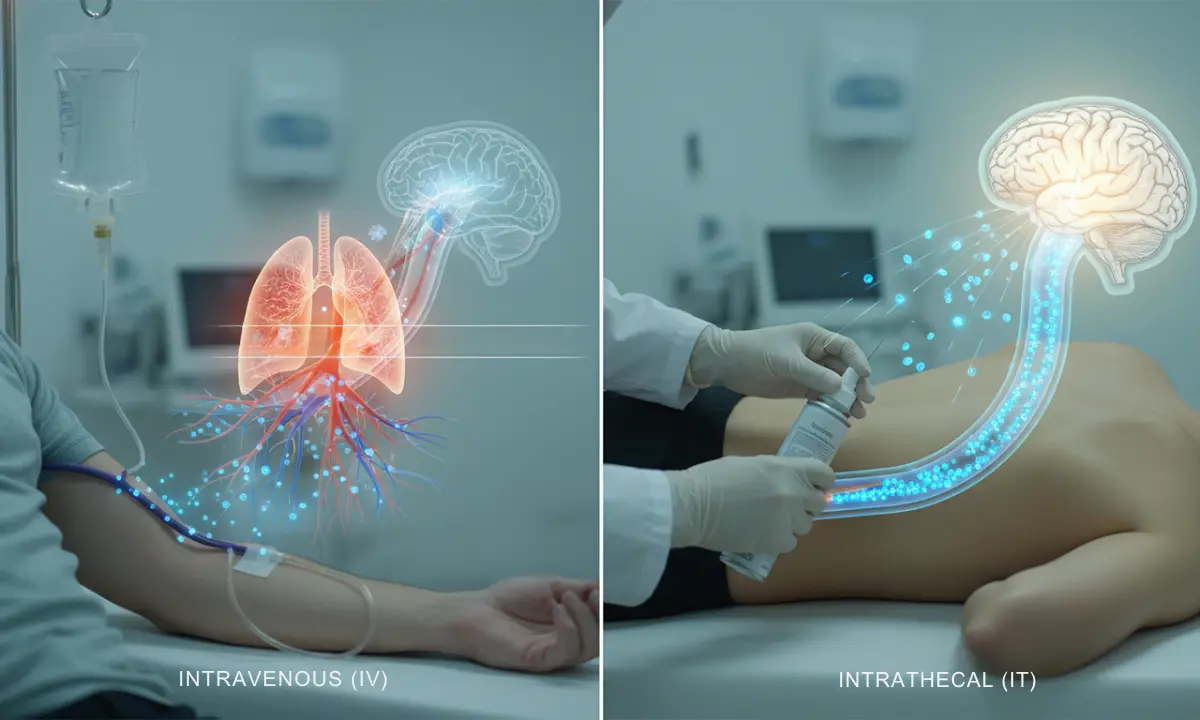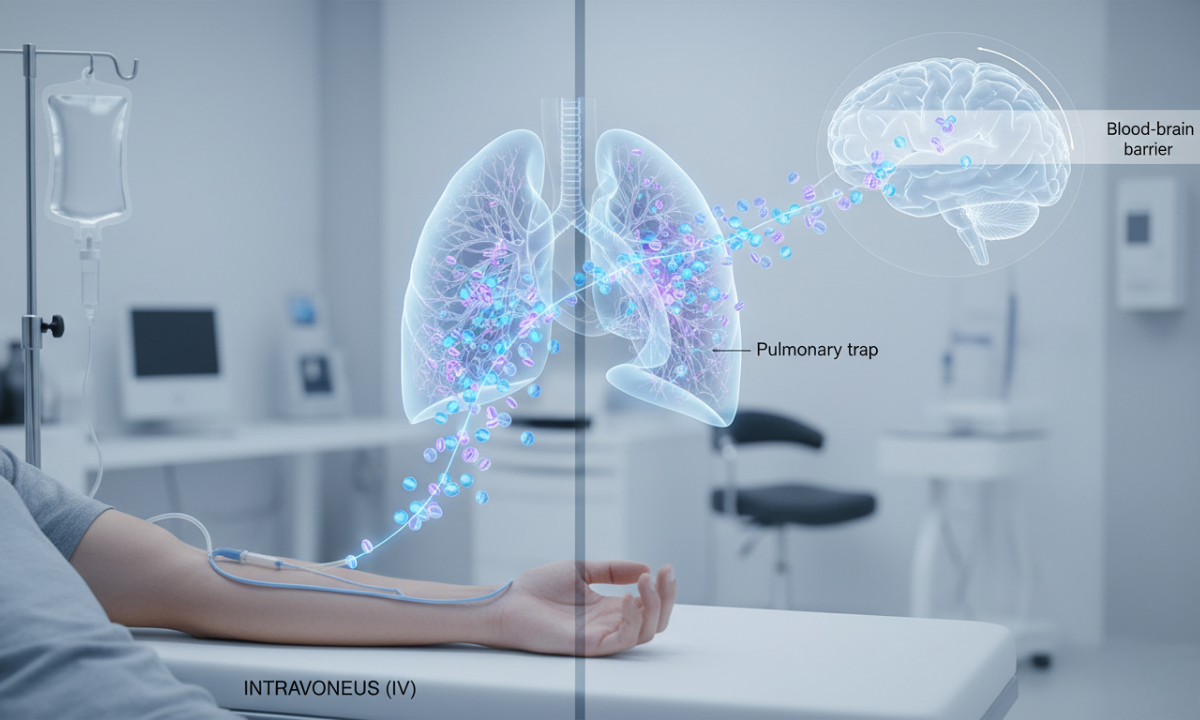
Intrathecal vs. Intravenous Administration: Which Route is Best for Autism?
When families begin to explore stem cell therapy for autism, they are often focused on the cells themselves.
If you’re new to the concept, you can read our detailed overview on what stem cells are and how they work before learning about delivery methods.
But just as important as the quality of the cells is the method of delivery. How do you get these powerful healing cells to where they need to go, the brain and central nervous system (CNS)?
At the Institute for Regenerative Medicine (IRM), patients typically have two primary options: Intravenous (IV) and Intrathecal (IT) administration.
These two delivery methods are part of IRM’s Comprehensive Autism Stem Cell Therapy Program, which combines umbilical cord stem cells with advanced allied therapies to support holistic neurological improvement.
Understanding the difference is key to understanding the therapy itself. While both are effective, one offers a much more direct and potent route for neurological conditions.
Table of Contents
The Standard Route: Intravenous (IV) Stem Cell Therapy
This is the method everyone is familiar with. It’s a simple, minimally invasive procedure, just like getting a standard vitamin drip.
Curious where these cells come from? Learn how we generate and prepare stem cells in our in-house lab for maximum safety and potency.
For families exploring their options, our guide comparing stem cell therapy with other healing methods provides further clarity on how IRM’s approach stands apart.

The Direct Route: Intrathecal (IT) Stem Cell Injection
This method is designed to bypass the body’s barriers and deliver the cells directly to their target. An intrathecal stem cell injection is a lumbar puncture procedure, but with a critical difference.
You can also read about other stem cell injection techniques that complement this approach for different medical conditions.

Why is Intrathecal Suggested for Autism?
The goal of stem cell therapy for autism is to reduce neuroinflammation and support a healthier neurological environment.
Part of this process involves promoting anti-apoptosis mechanisms, the natural ability of stem cells to protect neurons from premature death.
The intrathecal route is suggested because it offers the most efficient path to this goal.
Learn more about the role of exosomes in stem cell therapy and how they amplify regenerative signaling and neuroprotection.
Patient Choice: The IRM Approach
While the medical logic for an intrathecal stem cell injection is clear, we understand that the procedure can sound intimidating for patients and parents.
That is why, at IRM, the intrathecal route is always optional.
The decision is made after a thorough consultation with our medical team. For many families, the potential for a more targeted and potent neurological effect outweighs the brief, minimally uncomfortable procedure. For others, a standard IV stem cell therapy route is preferred.
Our priority is patient safety, comfort, and providing a therapeutic protocol with the highest possible success rate.
Families coming from abroad can also read our detailed guide on traveling to Islamabad for autism treatment to plan their stay and treatment schedule.










